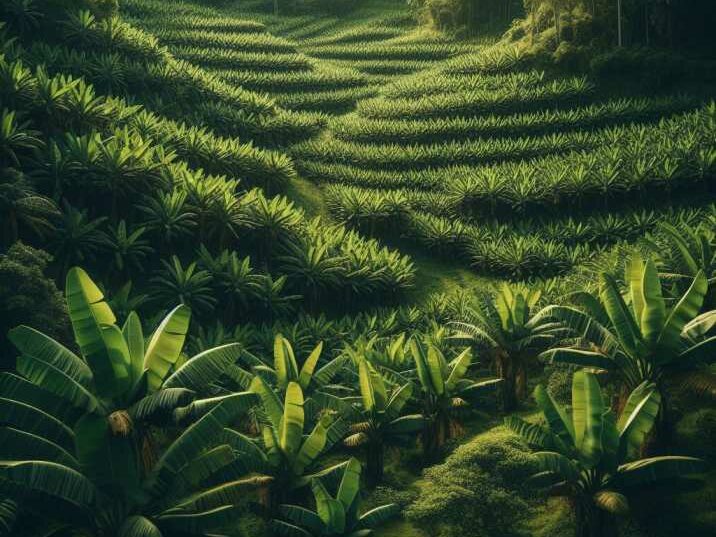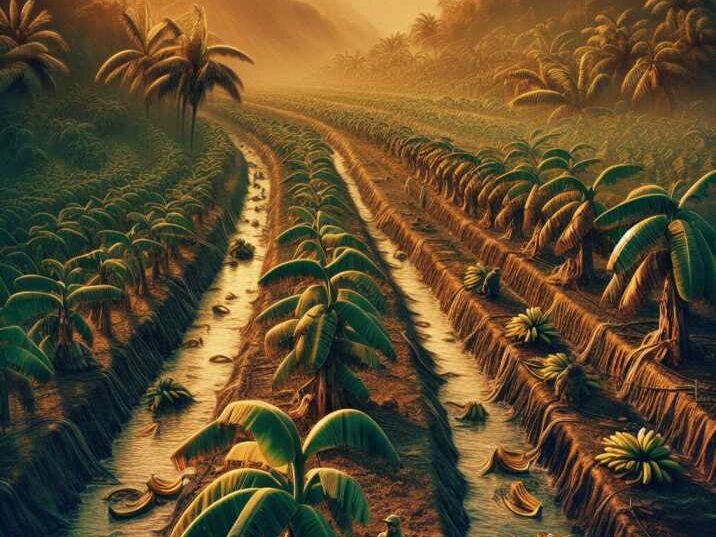Introduction:
Table of Contents
Bananas are a staple fruit enjoyed by millions around the world, but did you know that not all bananas are created equal? Enter Gros Michel, a variety of bananas that once dominated the market before being replaced by the now-common Cavendish. In this article, we’ll take a journey through time to explore nine historical facts about Gros Michel’s cultivation, shedding light on its rise, fall, and enduring legacy.

1. Origins of Gros Michel Bananas:
Gros Michel, also known as “Big Mike,” originated in Southeast Asia, specifically in regions such as Malaysia and Indonesia. These bananas were first cultivated by indigenous peoples thousands of years ago and eventually made their way to other parts of the world through trade routes.
2. Introduction to the Americas:
The Gros Michel banana made its debut in the Americas in the 19th century when it was brought over by European explorers. Its sweet flavor and sturdy peel quickly made it a favorite among consumers, leading to widespread cultivation in countries like Honduras, Costa Rica, and Panama.
3. Rise to Prominence:
By the early 20th century, Gros Michel bananas had become the leading export crop in countries throughout Central and South America. Their popularity soared due to their consistent taste, longer shelf life, and resilience against diseases like Panama disease, which was devastating to other banana varieties.
4. Panama Disease Epidemic:
In the 1950s, disaster struck the Gros Michel banana industry with the outbreak of Panama disease. This fungal infection, caused by the Fusarium pathogen, rapidly spread through plantations, decimating Gros Michel crops across the globe. The disease effectively ended the era of Gros Michel dominance in the banana market.
5. Replacement by the Cavendish:
To combat the Panama disease epidemic, growers turned to the Cavendish banana, a variety that was resistant to the Fusarium pathogen. While initially resistant, Cavendish bananas have faced their own set of challenges, including susceptibility to new strains of Panama disease and other diseases.
6. Legacy of Gros Michel:
Although Gros Michel bananas are no longer commercially cultivated on a large scale, they still hold a special place in the hearts of banana enthusiasts. Some small-scale growers and enthusiasts continue to cultivate Gros Michel bananas for their unique flavor and historical significance.
7. Revival Efforts:
In recent years, there has been a renewed interest in reviving Gros Michel cultivation. Some researchers and enthusiasts have been working to develop disease-resistant varieties or find ways to mitigate the effects of Panama disease, hoping to reintroduce Gros Michel bananas to the market.
8. Cultural Impact:
The decline of Gros Michel bananas had a significant cultural impact, especially in regions where they were once a staple crop. Stories and memories of Gros Michel bananas live on through oral traditions, historical records, and cultural artifacts, preserving their legacy for future generations.
9. Future Outlook:
While Gros Michel bananas may never regain their former glory, their story serves as a reminder of the delicate balance between agriculture, disease, and human intervention. As we look to the future of banana cultivation, we can learn valuable lessons from the rise and fall of Gros Michel, ensuring a more sustainable and resilient banana industry for generations to come.

Table of Information:
| Historical Fact | Description |
|---|---|
| Origins of Gros Michel | Originated in Southeast Asia, specifically Malaysia and Indonesia. |
| Introduction to the Americas | First brought to the Americas by European explorers in the 19th century. |
| Rise to Prominence | Became the leading export crop in Central and South America in the early 20th century. |
| Panama Disease Epidemic | Outbreak of Fusarium pathogen in the 1950s devastated Gros Michel crops worldwide. |
| Replacement by the Cavendish | Growers turned to the Cavendish banana for its resistance to Panama disease. |
| Legacy of Gros Michel | Despite decline, Gros Michel bananas still cherished for their flavor and historical significance. |
| Revival Efforts | Renewed interest in developing disease-resistant varieties or mitigating Panama disease effects. |
| Cultural Impact | Decline of Gros Michel bananas had significant cultural impact in regions where they were staple crops. |
| Future Outlook | While Gros Michel bananas may never regain prominence, efforts continue to ensure a sustainable banana industry. |
Conclusion:
The history of Gros Michel banana cultivation is a tale of triumph and tragedy, showcasing the resilience of one of America’s favorite fruits. From its humble origins to its decline and potential revival, Gros Michel bananas continue to captivate our imaginations and taste buds. As we reflect on the past, let us also look towards the future, where new innovations and efforts may one day bring Big Mike back to our fruit bowls.
FAQs:
- What is Gros Michel banana?
- Gros Michel banana, also known as “Big Mike,” is a variety of banana that was once widely cultivated for its sweet flavor and sturdy peel.
- Why did Gros Michel bananas decline?
- The decline of Gros Michel bananas was primarily due to the outbreak of Panama disease, a fungal infection that devastated plantations around the world.
- Are Gros Michel bananas still available?
- While Gros Michel bananas are not commercially available on a large scale, some small-scale growers and enthusiasts continue to cultivate them for their unique flavor and historical significance.
- What is the difference between Gros Michel and Cavendish bananas?
- Gros Michel bananas were the dominant variety before the rise of Cavendish bananas, which are now the most commonly cultivated variety due to their resistance to diseases like Panama disease.
- Are there any efforts to revive Gros Michel cultivation?
- Yes, there have been efforts by researchers and enthusiasts to develop disease-resistant varieties or find ways to mitigate the effects of Panama disease in hopes of reintroducing Gros Michel bananas to the market.
